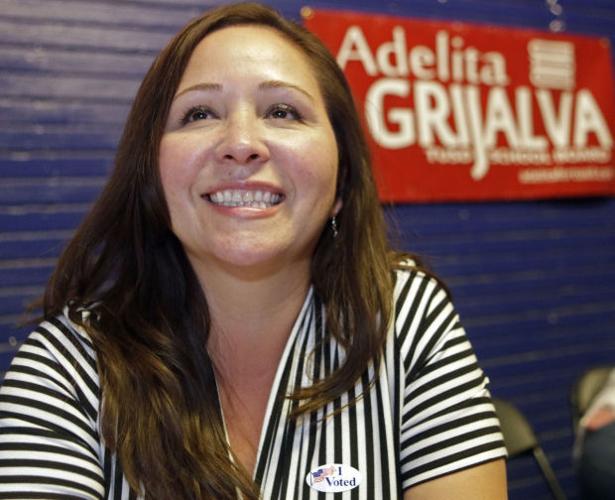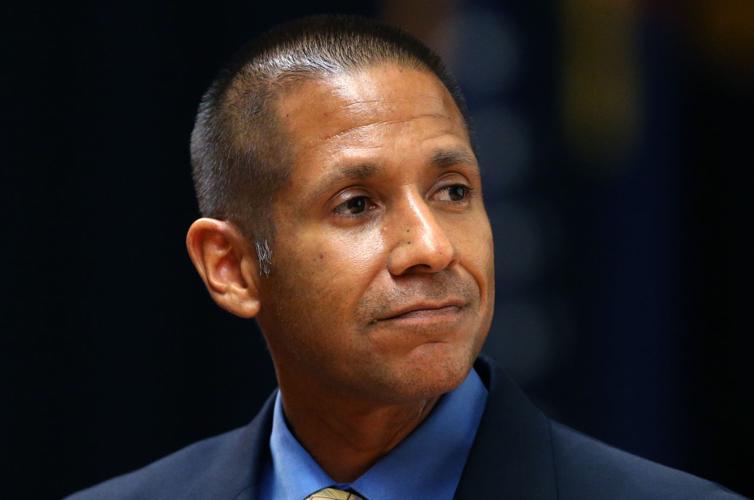Despite receiving the largest infusion of state funding in more than a decade, Tucson Unified School District failed to balance its budget Tuesday and will start off the new fiscal year having to make cuts.
The district Governing Board approved a $566 million budget for the upcoming school year that relies on rosy enrollment projections, assumes money that is in legal limbo will materialize and leaves just a fraction of a percent of its funding left uncommitted and available for emergencies.
Then, immediately after approving the already-tight budget, the board went against the advice of its budget guru and voted to spend more, plunging the district more than $100,000 in the red before the fiscal year even begins.
“We’re going to have to go back and make cuts,” district Superintendent Gabriel Trujillo said directly after the board approved its budget.
State lawmakers in May approved a budget that gave schools a windfall of funding, totaling about $16 million for TUSD above inflation for the next school year.
The district put most of that funding, more than $15 million, directly into salary increases, leaving little to cover the other spending initiatives it had planned before lawmakers approved the additional money in response to the #RedForEd movement.
Despite the promise of new funds from the state, the district’s budgeting process started off on shaky footing heading into fiscal year 2019, which begins July 1. The biggest problem is that student enrollment in the district, and the state money students bring with them, has been in a steady decline for decades.
That declining enrollment left the district with a shortfall of more than $6 million in this fiscal year, and district officials have been cutting spending for months to end FY18 at a zero balance.
By comparison, the district started the current-year budget with a carry-forward balance of $4.4 million. A healthy carry-forward for a district TUSD’s size would be roughly $12 million, according to TUSD’s executive director of financial services, Renee Weatherless.
The district will also be without $4 million in grants that it had received this year, and is receiving less money from the state because of declining teacher experience.
On top of that, the district’s budget banks on collecting $17 million in desegregation funds that are in legal limbo due to a fight between the state and the county over who should pay the tax to support TUSD’s desegregation efforts. A provision in the state budget pushed the tax to raise those funds onto local homeowners, but Pima County is refusing to collect what it calls an “illegal tax,” putting the funding in question.
After the Legislature approved the state budget, the district quickly budgeted its influx of new state funds on employee raises.
The TUSD budget adopted Tuesday night on a 4-0 vote, with board member Mark Stegeman absent, includes funding to provide salary increases for all employees.
Teachers and certified staff workers will receive an average raise of 9 percent, most blue-collar workers will earn a 4 percent increase, and principals and school administrators will receive a 1 percent increase. The budget gives bus drivers an additional $1 per hour, after the district conducted a wage analysis that showed its bus drivers were underpaid.
The budget also provides funding to give school social workers a raise to go along with their new duties of working with students who have discipline issues. It also sets aside money to ensure the district can comply with the 50-cent-per-hour minimum wage increase set to go into effect in January.
Other projects, however, had to go by the wayside. The district will not increase its number of counselors, librarians or performing arts teachers, as its officials had hoped.
That spending likely would have left the budget unbalanced, had the district not revised its enrollment estimates, from an expected decrease of 2 percent, to just 1.6 percent. The average enrollment loss over the past eight years has been 2.2 percent per year, though that includes a year with a significant drop due to school closures, according to Weatherless.
“We’re saying let’s be a little bit more optimistic, and (expect) a 1.6 percent reduction,” Weatherless told the board Tuesday.
Revising the enrollment estimates left the district with an ending balance of just under $500,000, though Weatherless warned the Governing Board on Tuesday night that it would be unwise to spend that money.
“If we’re conservative and look at the total, that means there’s some (spending) capacity in these numbers that we probably shouldn’t allocate,” she said, calling the end balance “tiny” and warning that if Governing Board members spent all that money, she would be coming back to them mid-year asking for budget cuts.
But spend they did, increasing the already-approved pay raises for certain employees, and leaving the district with just $38,000 of uncommitted “contingency” funds for the upcoming school year.
They didn’t stop there.
The Governing Board then voted to cancel its contract with a company that provides outsourced substitutes, a move that district officials said would force the Human Resources Department to hire several new staffers, and would cost an estimated $150,000 in the first year, increasing significantly in future years.
That move, however, is not yet reflected in the budget — district officials have to make cuts of more than $100,000 to find the money to pay for it first.
Governing Board members had mixed opinions about the overspending, although their concerns weren’t serious enough for any of them to vote against the budget.
Board member Adelita Grijalva noted that $100,000 overspending is just a sliver of the district’s $566 million budget, but said the bigger problem is that the district has zero dollars on hand for a contingency budget, which she argues should be at least $4 million.
“To not have any contingency for a district our size is a huge problem. We on average have had between $10 (million) and $12 million — the lowest we’ve ever had is $4 million,” she said.
She suggest the district could cut off the $600,000 contract with the Pima County Sheriff’s Department to provide school resource officers at several schools. In the past, those officers were paid for by a grant, which has since dried up, she said. The district could also look to smaller savings, such as by not printing out the student code of conduct, and putting it online instead, which she said could save $50,000 alone.
She said the district avoided making the hard choices in setting its budget, instead kicking those down the road.
“You can’t continue to provide everything, and lose students, and not make changes in spending. And we just haven’t made the changes we need to. We haven’t had those conversations,” Grijalva said.
But Governing Board member Rachael Sedgwick said the district has a history of squirreling away funds, and she expects that they’ll be able to find the money somewhere to balance the budget.
She noted that the $566 million budget is “all the funding we get, not all the funding we have.”
Sedgwick acknowledged that picking among the many priorities of the district is “hard because we have so much need” and that district administrators will have to be creative to make ends meet.
“We’re bleeding a stone and proving it’s possible,” she said.









